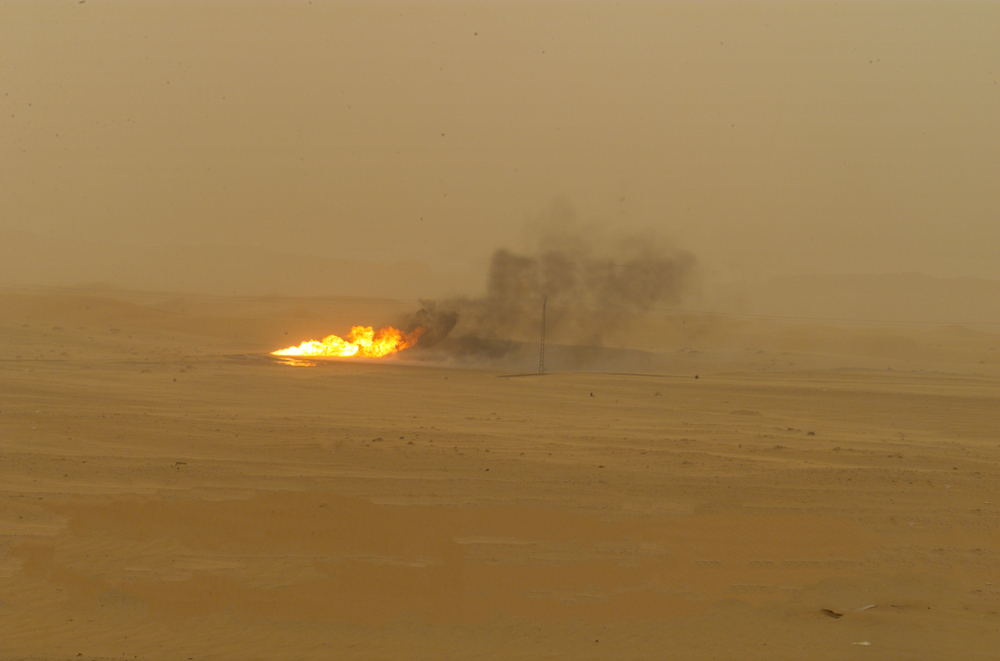Methane leaks from oil and gas facilities are among the most insidious causes of global warming, not least because they are largely unavoidable.
Many oil and gas producers have dramatically reduced the amount they vent into the atmosphere. Nevertheless, some oil and gas facilities still emit methane on a regular basis, sometimes on vast scales. But this practice is often hidden because it is difficult to spot methane plumes before they disperse and with sufficient resolution to identify the culprit.
Now that looks set to change, thanks to the work of Sudhanshu Pandey at the Netherlands Institute for Space Research in Leiden, as well as the Jet Propulsion Laboratory in Pasadena, and colleagues, who have developed a high-resolution methane-tracking system by combining the data from several satellites from the European Space Agency. In effect, the team can zoom in to see exactly where a leak is being produced, just as it is possible to zoom in to almost any point on Earth using Google Maps.
In 2017, the European Space Agency launched a satellite called Sentinel-5p that can detect methane plumes anywhere on Earth. The satellite is in a sun-synchronous polar orbit that gives it complete coverage of the planet every day. However, it has a resolution of around 7 kilometers (about 4 miles), which is not powerful enough to find the specific facility that is responsible. Commercial companies like GHGSat offer services that can map methane plumes with a resolution measured in meters, but their data is not publicly available.
So Pandey and colleagues decided to match the data from Sentinel-5p to higher resolution data from two other satellite systems. Sentinel-3 consists of two satellites following each other in sun-synchronous polar orbit at 800 km (about 500 miles) with a resolution of 500 m (about 1640 feet); and Sentinel-2 is a similar twin satellite arrangement in a similar orbit with a resolution down to 20 m (about 65 feet).
Neither of these satellite systems is specifically designed to spot methane. However, at certain frequencies and under certain conditions, they are sensitive enough to spot the absorption methane causes. This capability allows the team to zoom in on the Sentinel-5p data to find specific culprits.
The team uses two case studies to demonstrate the technique.
The first focuses on a single methane leak spotted by Sentinel-5p on the outskirts of Moscow on the morning of June 18, 2021. Sentinel-3 data taken the same day reveals this to be two separate methane leaks from facilities 30 km (about 18 feet) apart.
According to the researchers, Sentinel-2 data gathered just a few minutes later identify two separate locations along the Gryazovets-Ring of the Moscow Region Gas Pipeline. “The western plume is coming from a small piece of infrastructure next to the pipeline, and the eastern plume comes from the Gazprom Pereslavskoye compressor station,” they write.
Satellite passes the following day show the leaks to have stopped. Pandey and co. conclude that these events were probably controlled methane releases designed to relieve excess pressure in the pipeline.
Nevertheless, the event released a significant amount of methane into the atmosphere at a rate that reached as much as 269 tonnes (over 59,000 pounds) per hour. (By comparison, the 2022 sabotage of the Nord Stream gas pipelines in the Baltic Sea was the largest anthropogenic methane leak ever recorded, dumping 220,000 tonnes (485 million pounds) of methane into the atmosphere in just a single month. After the initial explosion, the leak peaked at a rate of 5,000 tonnes (about 11 million pounds) per hour.)
The researchers also focus on a reported release from the Hassi Messaoud oil and gas field in Algeria that Sentinel-5p observed from Jan. 3 until Jan. 8, 2020. Sentinel-3 and Sentinel-2 data reveal the source as a specific petrochemical facility where methane was leaking at a rate of up to 68 tonnes (about 150,000 pounds) per hour.
After Jan. 9, the leak was replaced by significant burning activity, which continued until Feb. 13, when it moved north by 150 m (about 500 feet). “Such activity is typical for gas well blowouts, where operators shift the fire site to access the well and control the blowout,” say the authors in their paper.
The team says the leak lasted for a total of 132 days, during which it emitted pure methane into the atmosphere for six days. “High-resolution satellite data have identified multiple methane-leaking sites in Hassi Messaoud, but they do not cause methane plumes as large as the one observed during January 3–8,” says Pandey and the other authors.
This important research will continue, working to identify the world’s worst methane polluters. Methane is broken down by sunlight and so is active in the atmosphere for just a few decades. So global action to reduce emissions now can have a significant effect in the relatively short term. Indeed, the hope is that anthropogenic emissions can be reduced by 45 percent by 2045.
The researchers’ technique should play an important role in helping to name and shame offenders and allow policy makers to devise appropriate measures to prevent further leaks. It can’t happen soon enough.
Ref: Daily detection and quantification of methane leaks using Sentinel-3: a tiered satellite observation approach with Sentinel-2 and Sentinel-5p : arxiv.org/abs/2212.11318














